Terracotta Warrior Army
Vicky, Del, Sue, and Paul went to the Bower's Museum to see the Terracotta Army...

We went to the Bowers to see the Terracotta Army
The Terracotta Army is a form of funerary art buried with the Emperor of Qin (Qin Shi Huang) in 209-210 BC (his reign over Qin was from 247 BC to 221 BC and unified China from 221 BC to the end of his life in 210 BC). Their purpose was to help rule another empire with Shi Huang Di in the afterlife. Consequently, they are also sometimes referred to as "Qin's Armies."
The Terracotta Warriors were discovered in March 1974 by local farmers drilling a water well to the east of Lishan (Mount Li). Mount Li is also where the material to make the terracotta warriors originated. In addition to the warriors, an entire man-made necropolis for the emperor has been excavated.
According to the historian Sima Qian (145 BC-90 BC) construction of this mausoleum began in 246 BC and involved 700,000 workers. Sima Qian, writing a century after its completion, wrote that the First Emperor was buried with palaces, scenic towers, officials, valuable utensils and 'wonderful objects,' with 100 rivers fashioned in mercury and above this heavenly bodies below which he wrote were 'the features of the earth.' Some translations of this passage refer to 'models' or 'imitations' but in fact he does not use those words. Recent scientific work at the site has shown high levels of mercury in the soil of Mount Lishan, appearing to add credence to the writing of ancient historian Sima Qian. The tomb of Shi Huang Di is near an earthen pyramid 76 meters tall and nearly 350 square meters. The tomb remains unopened, in the hope that it will remain intact. Only a portion of the site is presently excavated.
The Bowers Museum
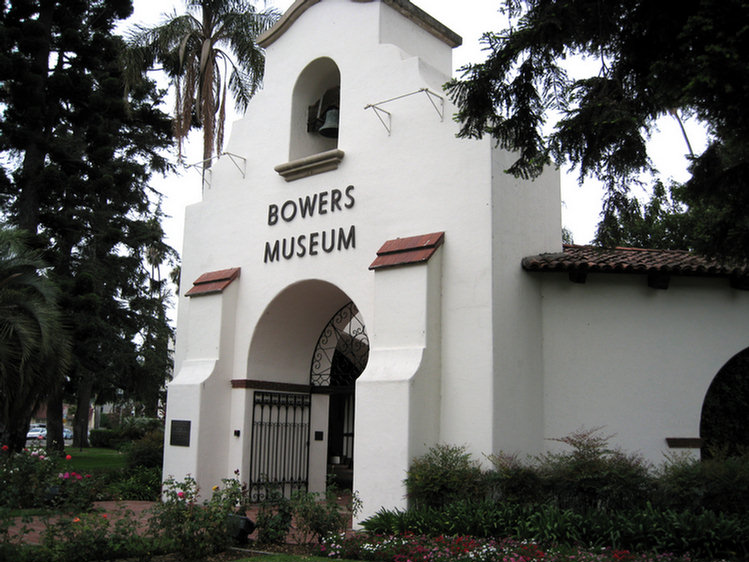
A great little museum just a few miles from home!

Why am I going to see a bunch of old men when I live with one?
Pictures From China

Only about one-third of the excavation area has been completed as of this date!
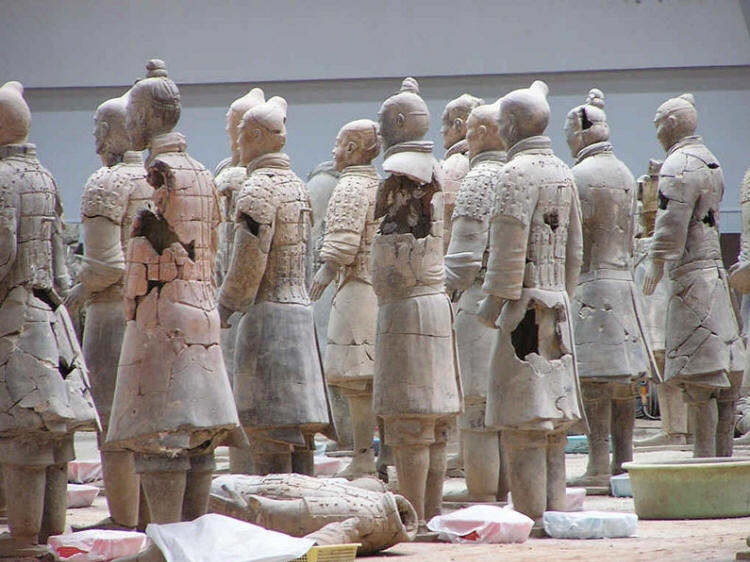
When the original wooden covering collapsed, 99% of the warriors were rushed into pieces and they are being restored (glued back together).
Our Pictures
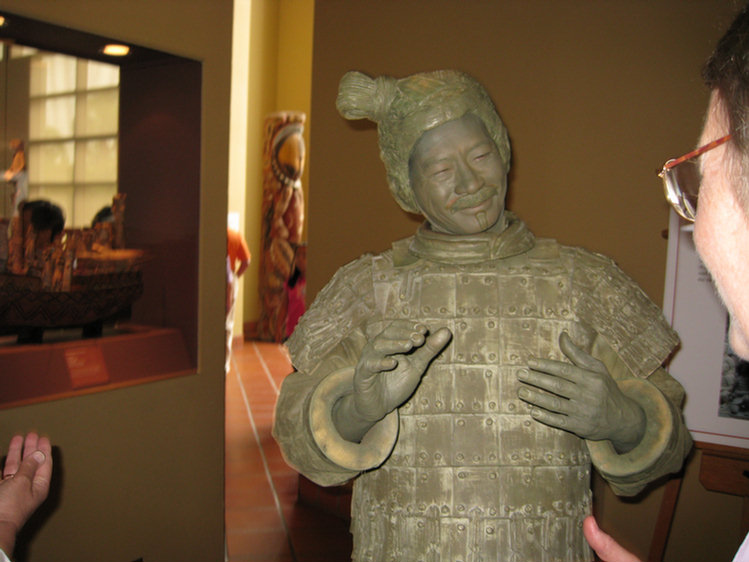
We were greeted by a warrior at the front door! He looked so very real!
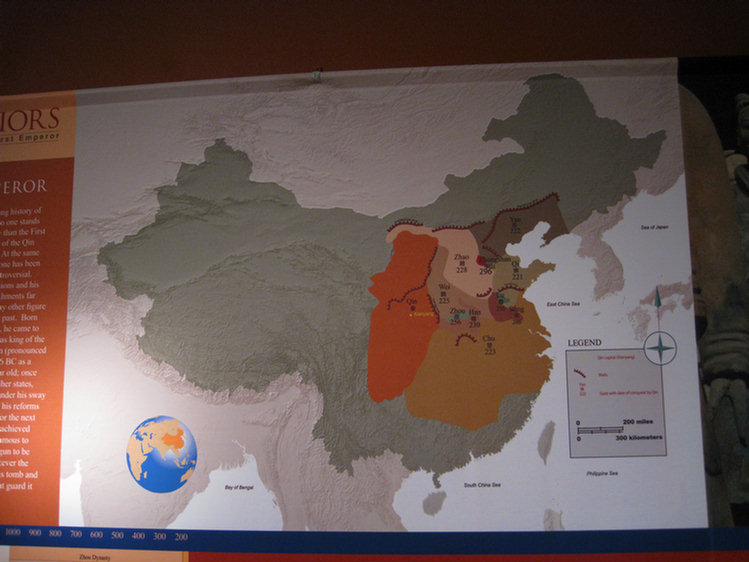
The Bowers has great displays and had a personal audio system so we could hear about each of the exhibits

The horses and bridals are originals. The carts were wood and long since decayed into history. The cart is reconstructed.
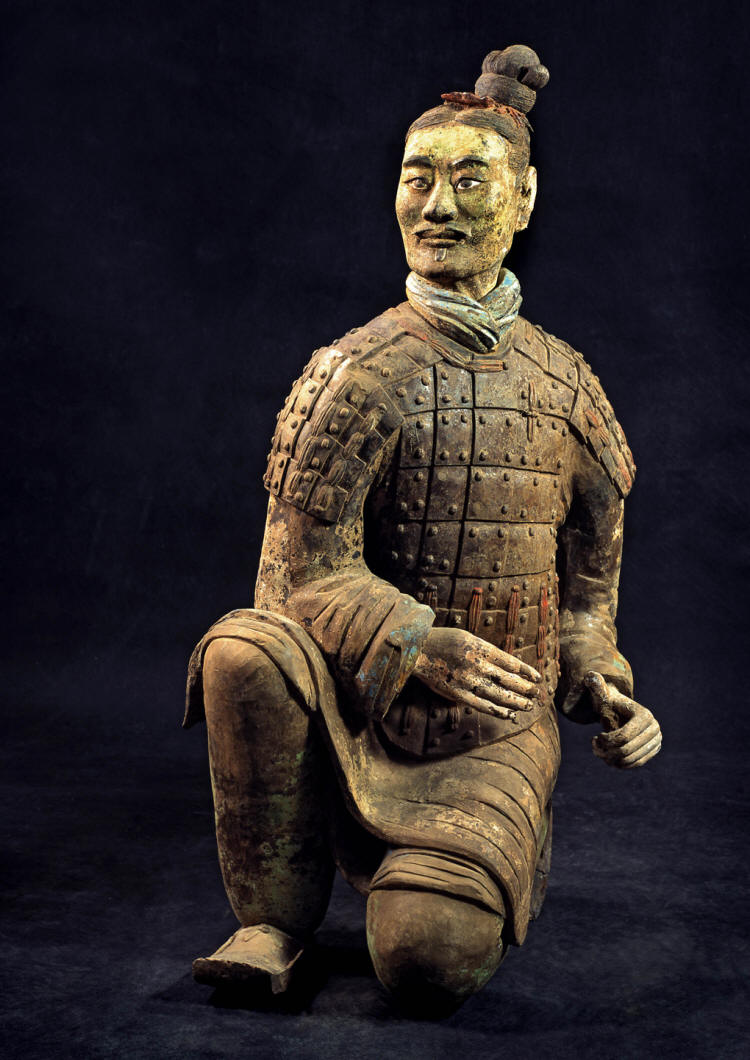
The warrior originally held real weapons but it is believed they were removed by real people needing the weapons!
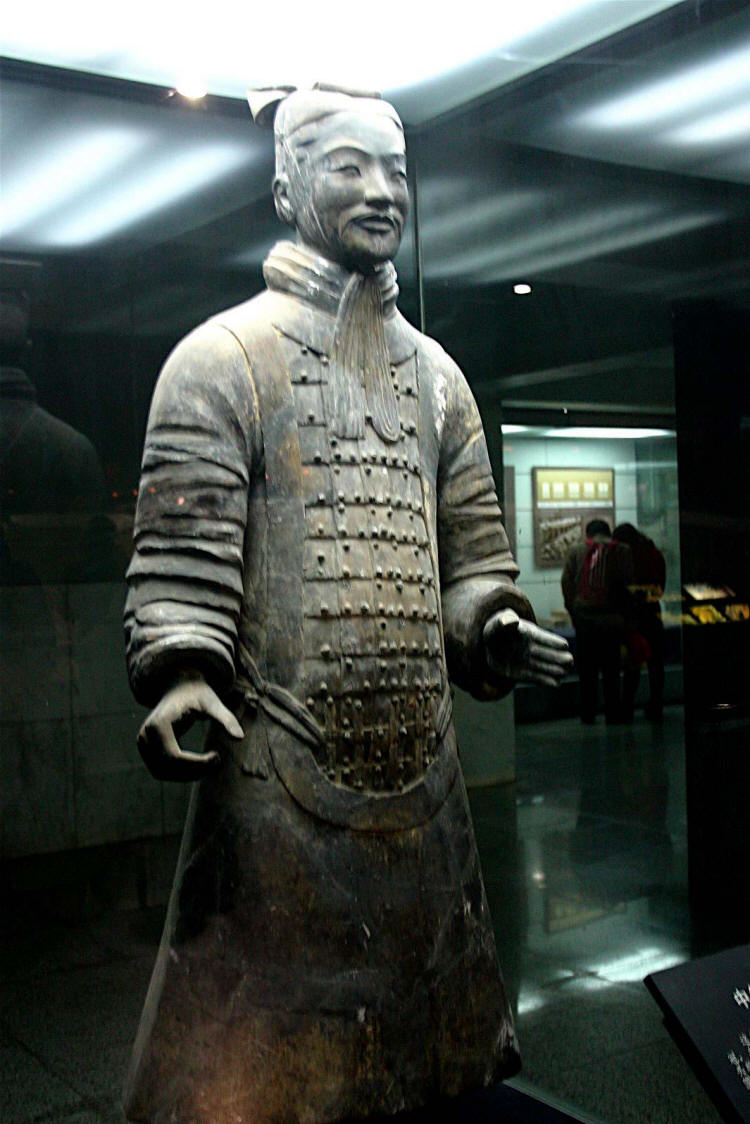
The details even included the strands of hair on their heads! Originally they all had real weapons just like their life size counterparts!

They were originally colored but the exposure to air caused the coloring to fall off.
A new method is being used now to protect the colorings.
It took 1,000+ artisans to produce the estimated 7,000+ figures using assembly line methods. Each warrior weighs in at about 400 pounds!

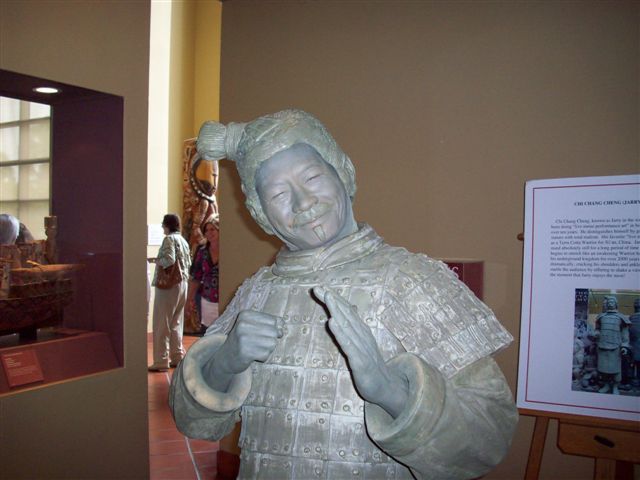
He met us at the front door and scared several people (he was real!)
We Saved The Oldest Until Last!

The three oldest warriors at the museum, arranged by
age left to right!
On the left are the three oldest items in the museum.
The gentleman in black has been carefully preserved using fine alcohols from all over the world. While wine is the main preservative, other blends have known to be used. What is amazing is that the preservative is taken internally and not on the outside. The alcohol did have a side effect which caused the loss of hair on the handsome devil!
The gentleman in the center is an archer and is standing in position to hold a crossbow often used in the Chinese wars of 300 BC. Notice the victory signal, a "thumbs up". He would walk around the displays tapping unsuspecting people on the shoulder and scaring them half to death.
The gentleman on the right is rather an amazing specimen of preservation in action using a new technique. The technique is entitled "redpaintium" and is unique having just been discovered this week.
Redpaintium pronounced Red-paint-ium requires the subject to have to paint a room BRIGHT RED and then remove said paint by using multiple layers of pinks and whites.
It is thought by the preservation specialist (Vicky Kuhn) that this about of sweat inducing labor plus the fumes from the gallons and gallons of paint would cause the fumes to enter his body thus preserving him! It seems to have works although it has had side effects. At the beginning of the visit to the museum, his short was white but the red paint fumes leaked out and colored his shirt!
We Visited The Gems Exhibit After Vicky Beat The Drums!
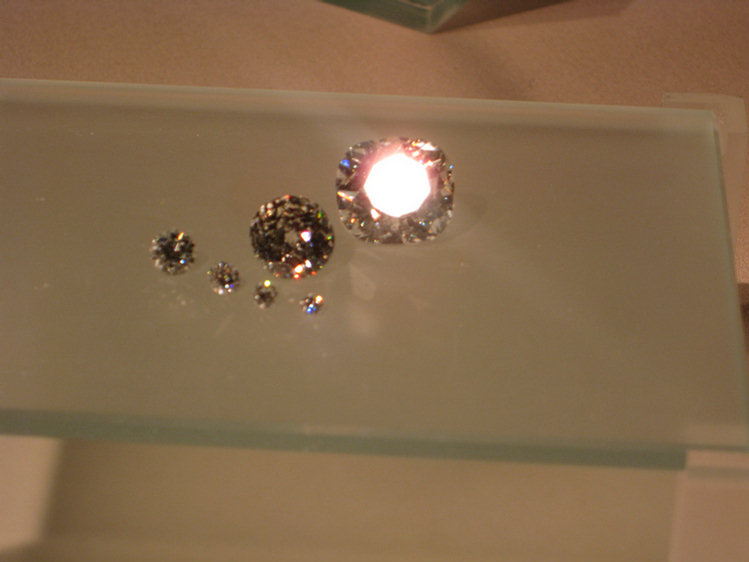
The diamonds just glistened in the bright lights

Did you know where carats came from?
A carob based weight unit was also used in Egypt in the Byzantine and early Arab periods. In this region, glass weights were used for weighing coins. From these the weight of the Egypt carat has been reconstructed as 196 mg. This is consistent with the average weights of carob seeds in the region.
The word came to English from French, derived from the Greek kerátion (κεράτιον), “fruit of the carob”, via Arabic qīrāṭ (قيراط) and Italian carato. The Latin word for carat is siliqua. In past centuries, different countries each had their own carat unit, all roughly equivalent to the mass of a carob seed. These units were often used for weighing gold.
Carob seeds were used as weights on precision scales because of their reputation for having a uniform weight.[citation needed] However, a 2006 study[
found carob seeds to have as much variation in their weights as do other seeds, though it seems that it is easier than with other seeds to recognize particularly large or small specimens and remove them. Thus, the carob seed was used as a weight not because it was naturally more uniform in weight, but because it could be more easily standardized.
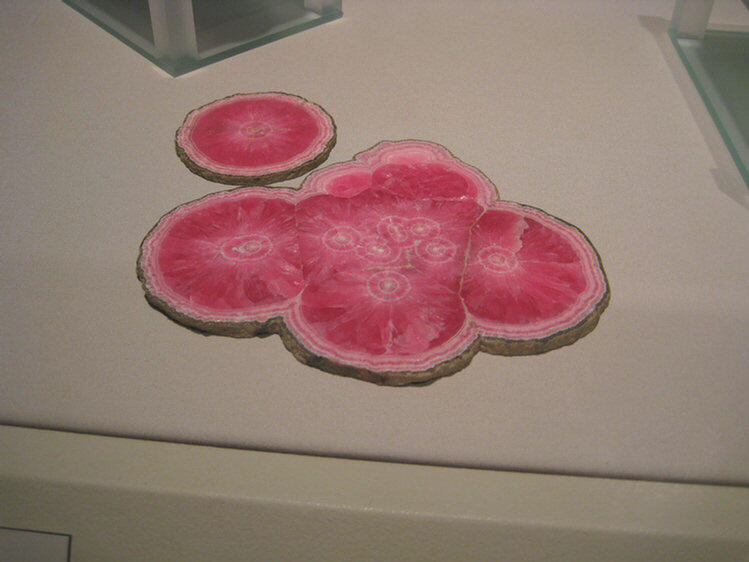
Gems are amazing!
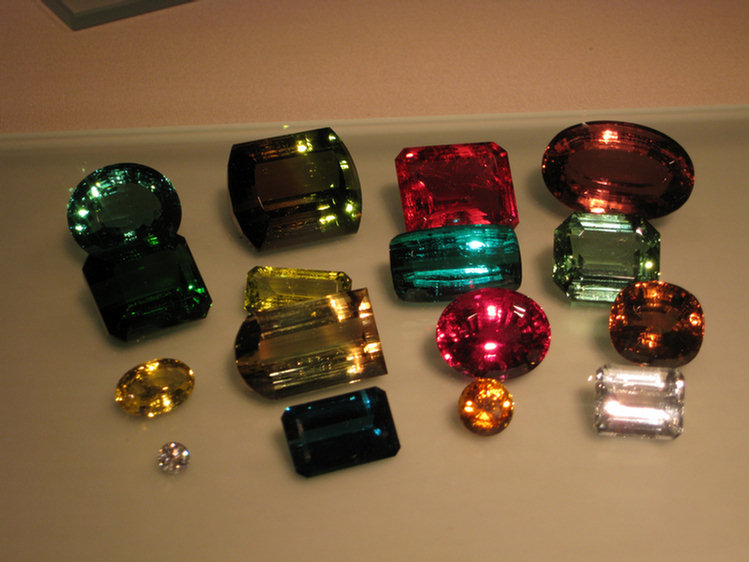
Same stone but differing mineral content!
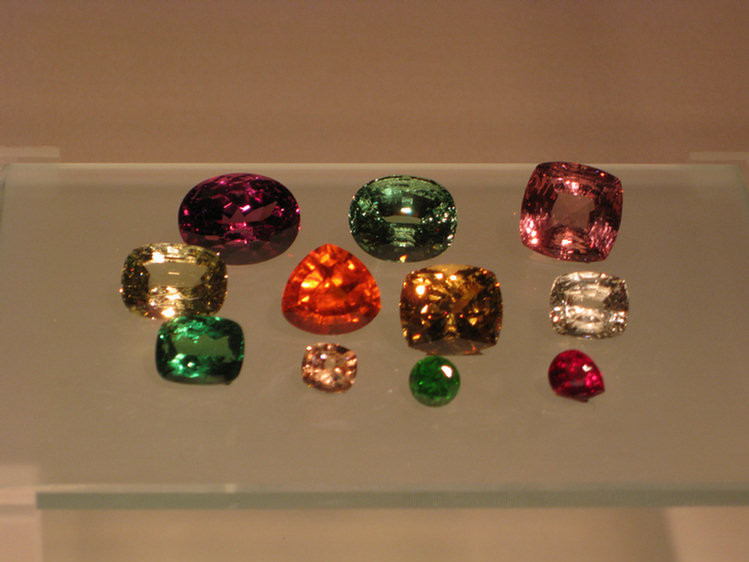
Gem cutting is indeed a science

The Dragon Fly (or Snake Doctor)
Time To Eat At Tangata (The Museum's Resturant)
Tangata (or "mankind" in the tribal Maori language of New Zealand) features Southwestern decor enclosed by glass walls and a ceiling framed with stuccoed beams and large windows to allow ambient light to illuminate the main dining area. Located in the Bowers museum's Mission-style courtyard, the 160-seat restaurant dedicates half of its available seating to alfresco dining on two large patio areas.
The patio area opens into the mission style courtyard that is perfect for romantic weddings or evening receptions. Tangata is open solely for lunch Tuesdays through Sundays, the restaurant serves a diverse menu of California cuisine "colored" with Joachim Splichal's award-winning French signature style.
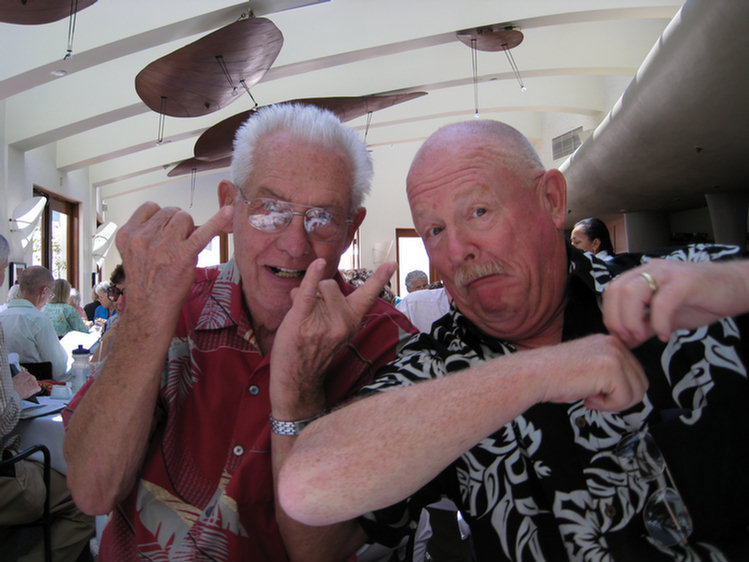
You can dress them up but can't take them anywhere!
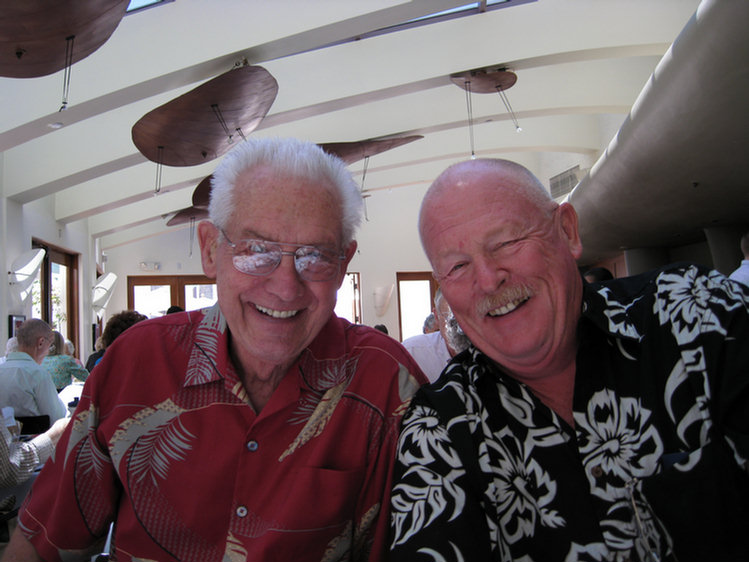
This is scary, they are both laughing!
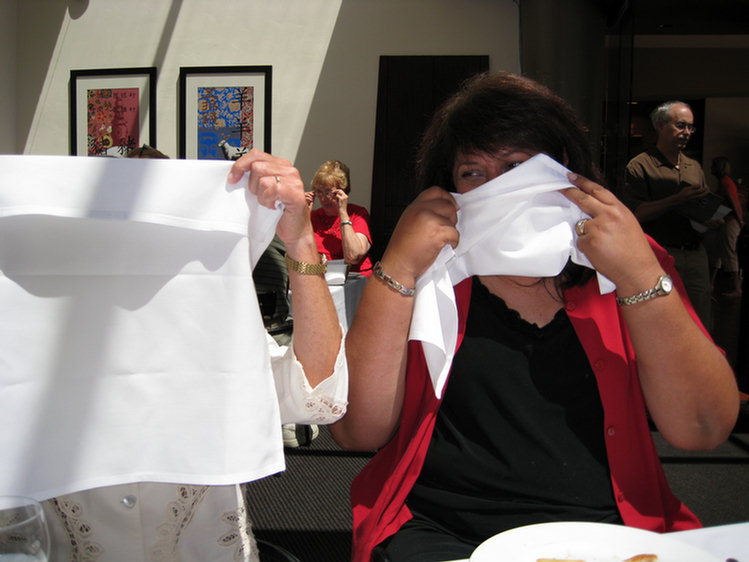
Girls can be silly also!
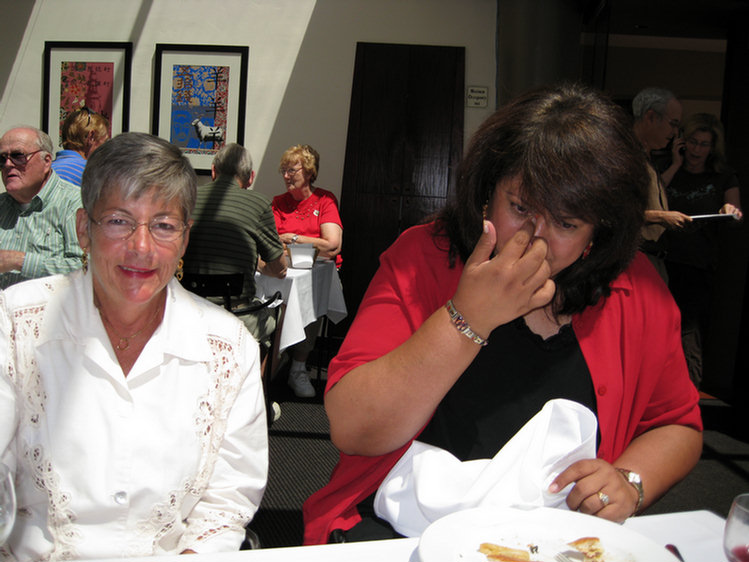
We know what she is putting on her forehead now don;t we?????

Caught! Sangria again?
Sangria (Spanish: sangría; Portuguese: sangria) is a wine punch typical of Spain and Portugal (the word means "bleeding" in both languages). It typically consists of: red wine, chopped or sliced fruit (often orange, lemon, apple, and/or peach; occasionally kiwifruit or banana), a sweetener such as honey, sugar, or orange juice, a small amount of added brandy, triple sec, or other spirits.

Nope... She doesn't make a good Cholo Dancer!
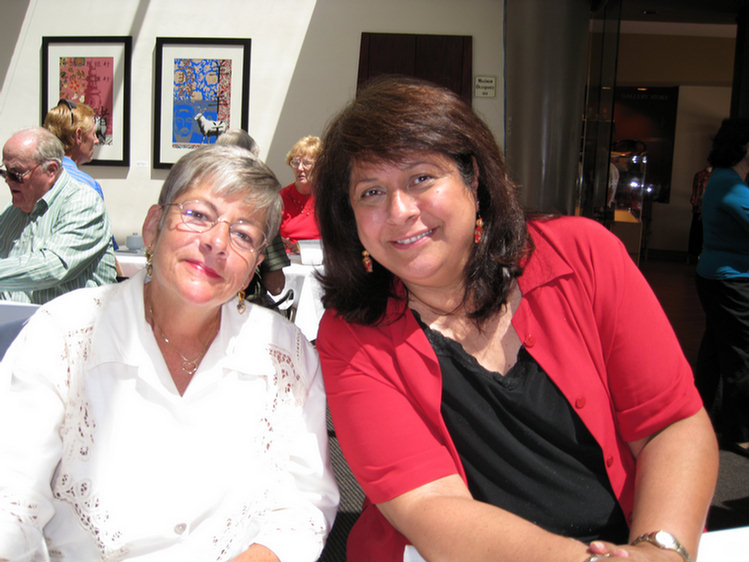
Now this also is worrisome, they are both smiling!